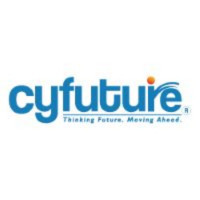AI Solution Providers vs. In-House AI Development: Which Is Better?

Strong 8k brings an ultra-HD IPTV experience to your living room and your pocket.
Table of Contents
Introduction
What Are AI Solution Providers?
What Is In-House AI Development?
Pros and Cons of AI Solution Providers
Pros and Cons of In-House AI Development
Key Factors to Consider When Choosing
Cost Comparison: Outsourcing vs. In-House
Use Cases for Each Approach
Hybrid Approach: The Best of Both Worlds?
Conclusion
1. Introduction
Artificial Intelligence (AI) is transforming industries, from healthcare to finance, by automating processes, improving decision-making, and enhancing customer experiences. However, businesses face a critical decision:
Should they use third-party AI solution providers or develop AI in-house?
Each approach has its advantages and challenges. This blog explores the differences, costs, and best use cases to help you decide which is better for your business.
2. What Are AI Solution Providers?
AI solution providers are companies that offer ready-made or customizable AI tools and services. These include:
Cloud-based AI services (e.g., Google Cloud AI, AWS AI, Microsoft Azure AI)
Specialized AI vendors (e.g., OpenAI for NLP, UiPath for RPA)
Consulting firms that build custom AI solutions
Examples of AI Solution Providers:
IBM Watson (Enterprise AI solutions)
OpenAI (ChatGPT, GPT-4 for natural language processing)
DataRobot (Automated machine learning)
H2O.ai (AI and ML platforms)
These providers offer pre-trained models, APIs, and managed services, reducing the need for deep AI expertise in-house.
3. What Is In-House AI Development?
In-house AI development involves building and maintaining AI systems internally. This requires:
Hiring AI specialists (data scientists, ML engineers)
Investing in infrastructure (GPUs, cloud computing)
Developing custom models tailored to business needs
Companies Using In-House AI Successfully:
Netflix (Recommendation algorithms)
Tesla (Autonomous driving AI)
Amazon (Supply chain optimization)
In-house AI allows full control, customization, and competitive advantage but demands significant resources.
4. Pros and Cons of AI Solution Providers
Pros
✔ Faster Deployment – Pre-built models reduce development time.
✔ Lower Initial Costs – No need for expensive AI talent or infrastructure.
✔ Scalability – Cloud-based AI can grow with business needs.
✔ Access to Cutting-Edge Tech – Providers update models regularly.
Cons
✖ Less Customization – May not fit unique business needs perfectly.
✖ Data Privacy Risks – Sensitive data processed by third parties.
✖ Vendor Lock-In – Dependency on a provider’s pricing and policies.
✖ Limited Control – No ownership of proprietary algorithms.
5. Pros and Cons of In-House AI Development
Pros
✔ Full Customization – AI tailored to exact business requirements.
✔ Data Security – Sensitive data stays within the company.
✔ Competitive Edge – Proprietary AI models can be a differentiator.
✔ Long-Term Cost Efficiency – No recurring licensing fees.
Cons
✖ High Initial Costs – Hiring experts and setting up infrastructure is expensive.
✖ Long Development Time – Building AI from scratch takes months/years.
✖ Maintenance Burden – Requires ongoing updates and monitoring.
✖ Talent Shortage – Finding skilled AI professionals is challenging.
6. Key Factors to Consider When Choosing
Factor
AI Solution Providers
In-House AI
Cost
Lower upfront cost
High initial investment
Time-to-Market
Faster deployment
Slower development
Customization
Limited
Fully customizable
Data Control
Less control
Full ownership
Scalability
Easily scalable
Requires internal scaling
Expertise Needed
Minimal AI knowledge required
Needs AI specialists
When to Choose AI Solution Providers:
Need quick AI implementation
Lack in-house AI expertise
Prefer pay-as-you-go pricing
Working with common AI use cases (e.g., chatbots, analytics)
When to Choose In-House AI:
Require highly specialized AI
Handle sensitive data (healthcare, finance)
Want full IP ownership
Have long-term AI strategy
7. Cost Comparison: Outsourcing vs. In-House
AI Solution Providers (Outsourcing Costs)
Subscription Fees: 500–10,000/month (e.g., OpenAI API, AWS AI)
Custom Development: 50,000–500,000 (one-time project)
Pros: Predictable costs, no hiring overhead.
Cons: Recurring fees can add up over time.
In-House AI Development Costs
Salaries: 150,000–300,000/year per AI engineer
Infrastructure: 10,000–100,000/year (cloud/on-prem servers)
Pros: One-time investment, long-term savings.
Cons: High upfront cost, hiring challenges.
Verdict:
Short-term projects → Outsourcing is cheaper.
Long-term AI strategy → In-house may save costs.
8. Use Cases for Each Approach
Best for AI Solution Providers:
Chatbots & Customer Support
Predictive Analytics
Image & Speech Recognition
Best for In-House AI:
Autonomous Vehicles
Fraud Detection in Banking (Custom ML models)
Healthcare Diagnostics (HIPAA-compliant AI)
9. Hybrid Approach: The Best of Both Worlds?
Some companies combine third-party AI tools with in-house development, such as:
Using OpenAI’s GPT-4 for NLP while keeping core algorithms in-house.
Leveraging AWS SageMaker for ML pipelines but training proprietary models.
Benefits of Hybrid AI:
✔ Balances cost and customization
✔ Reduces development time
✔ Maintains control over critical AI components
10. Conclusion
Which Is Better?
The choice between AI solution providers and in-house development depends on:
Budget (Can you afford in-house AI talent?)
Time Constraints (Do you need AI quickly?)
Customization Needs (Does off-the-shelf AI fit?)
Data Sensitivity (Is outsourcing secure?)
Note: IndiBlogHub features both user-submitted and editorial content. We do not verify third-party contributions. Read our Disclaimer and Privacy Policyfor details.




